The kitchen has long been considered the heart of the home, a place where family life thrives, culinary creations take shape, and cherished memories unfold. As such, when embarking on a kitchen extension project, it’s essential to give it the attention it truly deserves. Your extended kitchen should seamlessly integrate with the rest of your home, cater to the needs of family life, and, above all, make daily chores a breeze. In this comprehensive guide, we’ll walk you through every aspect of designing your dream kitchen extension, keeping it simple and accessible for all, and ensuring it’s optimised for search engine visibility.
The Significance of Your Kitchen
For many homeowners, the kitchen stands as the crown jewel of their residence. It’s the one room that garners the most attention and affection, whether you’re renovating an existing space or building an entirely new kitchen extension. It must be functional, robust, easy to maintain, accessible, comforting, inspiring, and accommodating in terms of storage. In essence, your kitchen extension should rise to the occasion, meeting these diverse demands without compromise.
Let’s dive into the essential steps and considerations for designing your ideal kitchen extension.
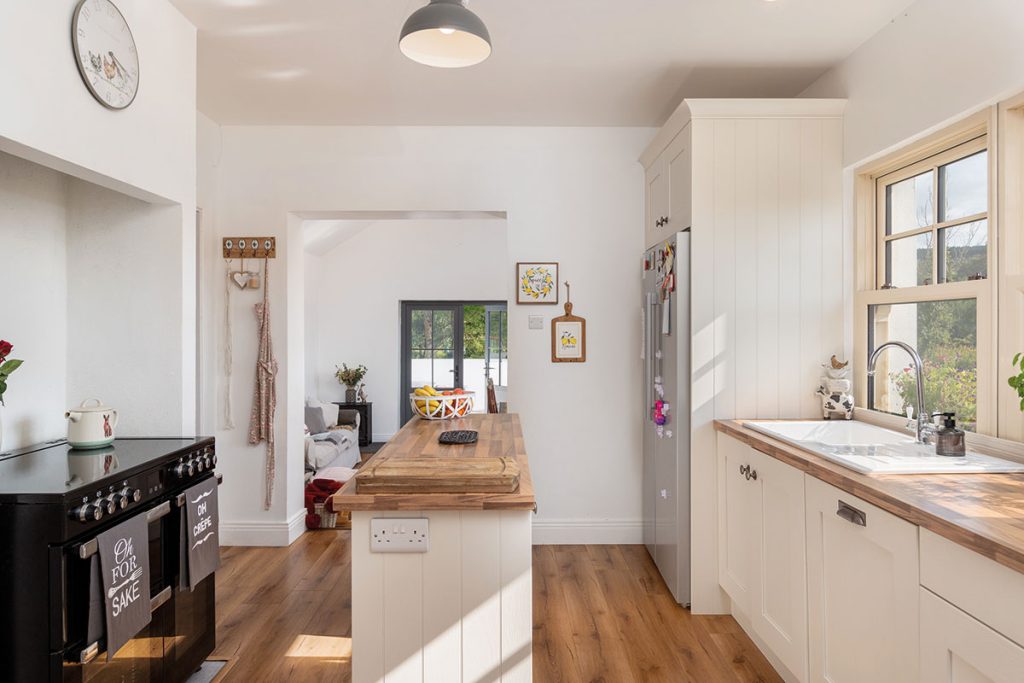
Kitchen Design: The Starting Point
The evolution of open-plan living has transformed the kitchen from a mere workspace into a multifaceted environment where dining, entertainment, and relaxation converge. The allure of kitchen islands and peninsulas is a testament to this paradigm shift, as these features encourage social interaction while preparing food and cleaning up.
Begin with Purpose
Before you embark on the exciting journey of designing your kitchen extension, take a step back and ponder how you intend to utilise this newfound space. It’s all too easy to be swayed by trendy design elements, such as a luxurious marble splashback or a convenient hot water tap, after glimpsing them in someone else’s picture-perfect kitchen.
Consider the following key aspects:
1. Seating
- How much seating do you need?
- What type of seating suits your lifestyle, e.g., bar stools, banquettes, or a formal dining area?
2. Storage
- Assess your storage needs based on your family size and kitchen inventory.
- Consider solutions for organising pots, pans, utensils, and pantry items.
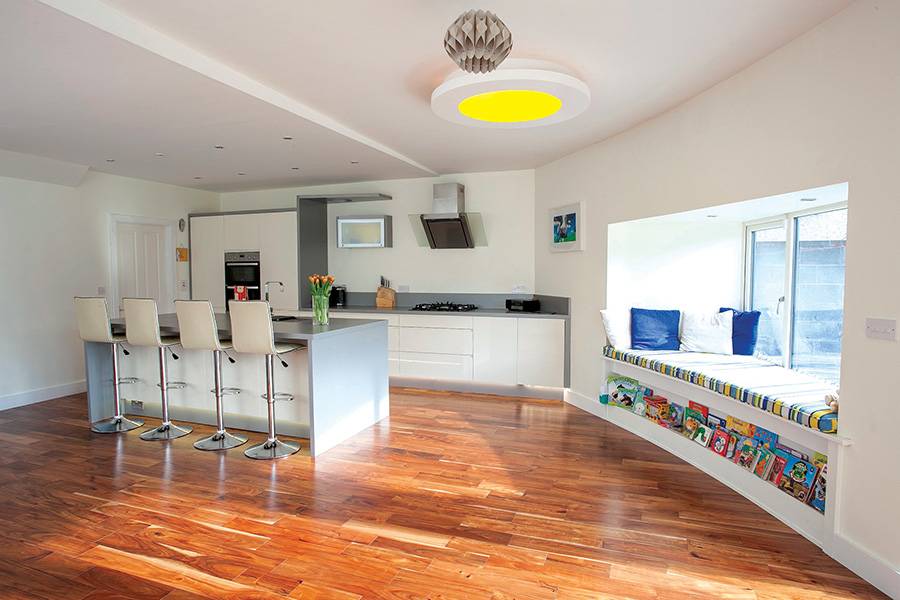
3. Lighting
- Plan for ample natural light during the day.
- Incorporate effective artificial lighting for evening ambiance.
4. Appliances
- List the essential appliances for your culinary endeavors.
- Explore options for integrated or freestanding appliances.
5. Heating
- Ensure comfortable heating for year-round use, especially in the colder Irish seasons.
6. Personal Style
- Reflect on your personal style preferences, such as contemporary, traditional, minimalist, or eclectic.
7. Lifestyle-Driven Design
- Examine your current kitchen habits and note what you appreciate or find lacking.
- Allow your daily routines and lifestyle to guide your kitchen extension design decisions.
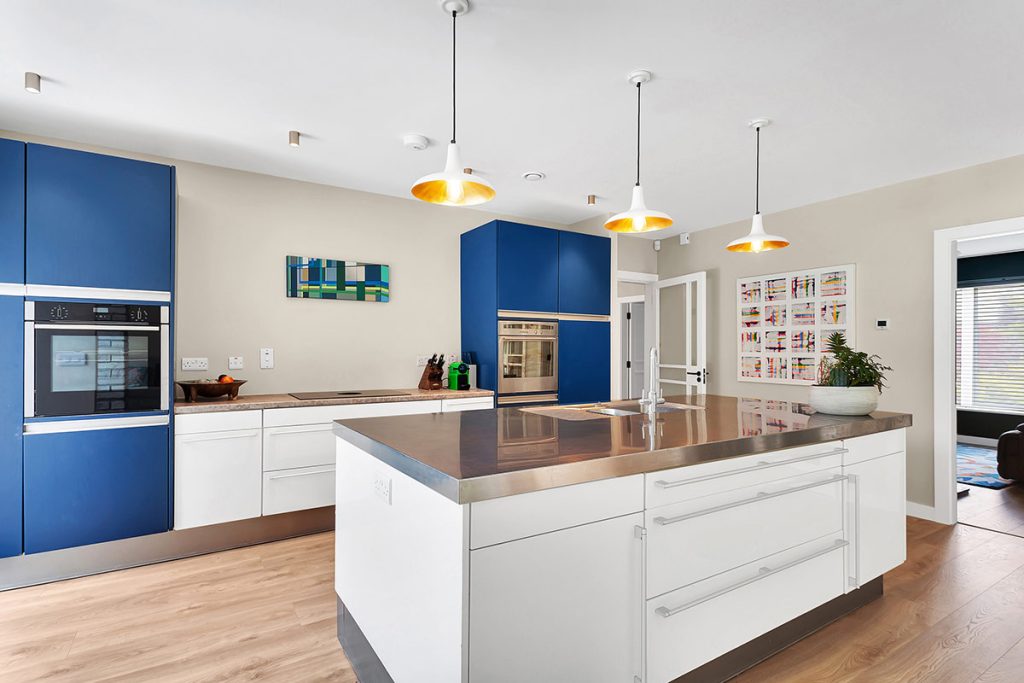
Navigating the World of Trends
While it’s tempting to dive headfirst into the latest kitchen design trends, it’s prudent to view them through a discerning lens. The internet’s wealth of design inspiration and photos has accelerated the ebb and flow of kitchen color palettes and finishes. What’s en vogue today may appear outdated in a few years.
Timeless Foundations
- To future-proof your kitchen extension, prioritise classic and timeless elements in the layout, cabinets, and surfaces.
- Reserve trend-driven choices for accessories and decor that can be easily updated as styles evolve.
A Kitchen Extension in Context
Consider your kitchen extension as more than just a standalone space. It should seamlessly connect and respond to the surrounding areas within your home. If your extension opens onto a garden, seize the opportunity to integrate the outdoor and indoor spaces for enhanced natural light, scenic views, easy access, and fluid movement.
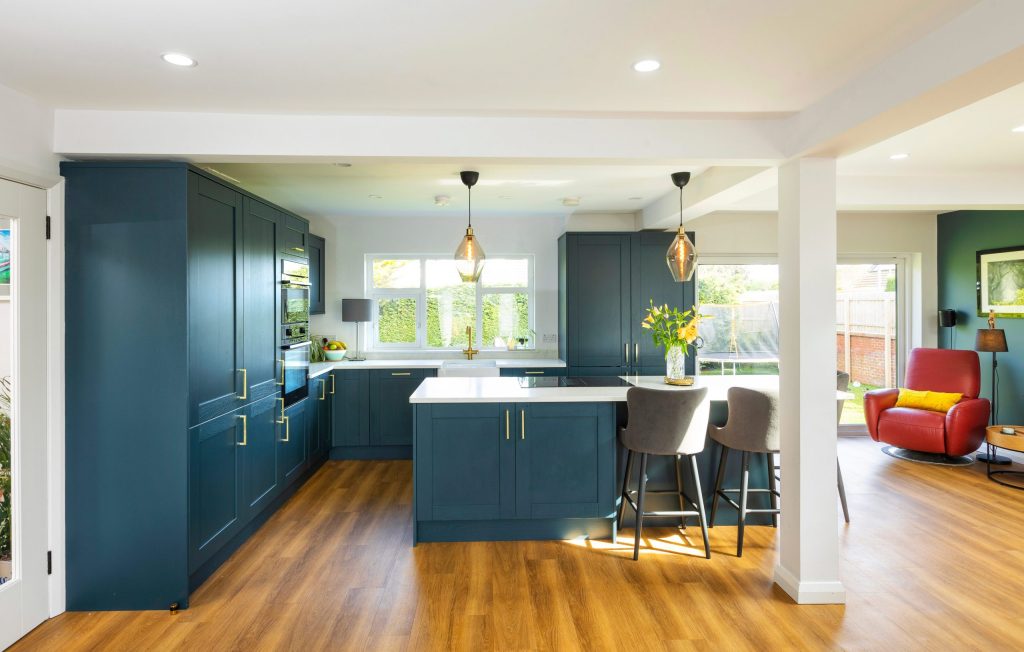
Think about the following considerations:
1. Zoning the Space
- If your kitchen extension includes dining and living areas, plan how each distinct zone interacts with the others.
- Define zones through structural elements, lighting, color schemes, and textures.
2. Continuity of Design
- Ensure a harmonious flow of light, color, and texture between your kitchen extension and connecting rooms like the hall, utility area, bathroom, or bootroom.
3. Sunlight Dynamics
- Recognise that sunlight isn’t constant; it varies throughout the day and across seasons.
- Observe the sun’s path in your space to optimise natural light.
4. Maximising Light
- Implement design strategies such as rooflights, clerestory windows, and well-placed artificial lighting to flood even the darkest corners with light.

Material Selection for Durability
When selecting materials for your kitchen extension, prioritise durability. Your chosen materials should withstand the rigors of daily life, including heat, moisture, spills, accidental drops, and the presence of children and pets.
Material Considerations
Here’s what to keep in mind:
1. Countertops
- While marble is visually stunning, it’s a porous natural stone that readily absorbs liquids. Consider alternative materials that offer both aesthetics and practicality.
2. Flooring
- Oiled oak flooring may complement glossy cupboards, but it can be vulnerable to staining. Evaluate flooring options with resilience in mind.
3. Sample Testing
- Request samples of flooring, worktops, and cupboard doors from suppliers.
- Conduct rigorous testing at home, including stabbing, scraping, placing hot objects, and exposing materials to various liquids. This practical evaluation will reveal whether a material can withstand your lifestyle.
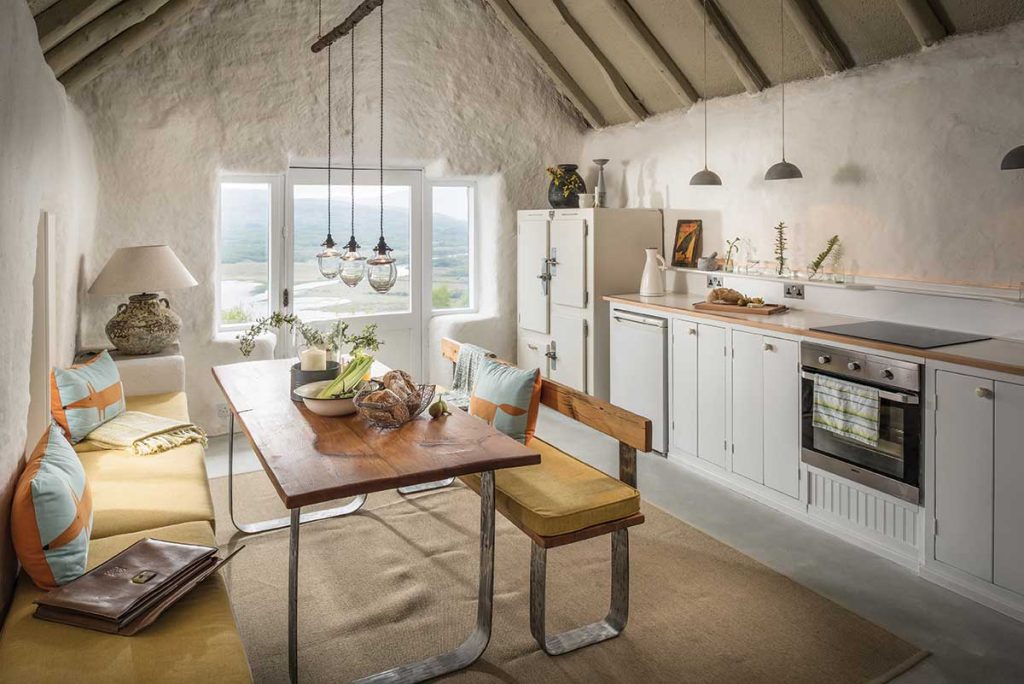
Budgeting: The Practical Side
Now, let’s address the less glamorous yet crucial aspect of your kitchen extension project: budgeting. An honest and well-structured budget is your compass throughout the renovation journey.
Establish Your Budget
Begin by determining a clear and realistic budget for your kitchen extension project. Calculate how much you can comfortably allocate, taking into account essential upgrades and desired luxury features. Always include a contingency fund to address unforeseen expenses that may arise.
Balancing Quality and Cost
While it’s important to stay within budget, resist the temptation to compromise on quality. Invest in high-quality materials and appliances that will serve you well over the long term. However, don’t shy away from savvy shopping strategies, such as seeking discounts and exploring cost-effective options.
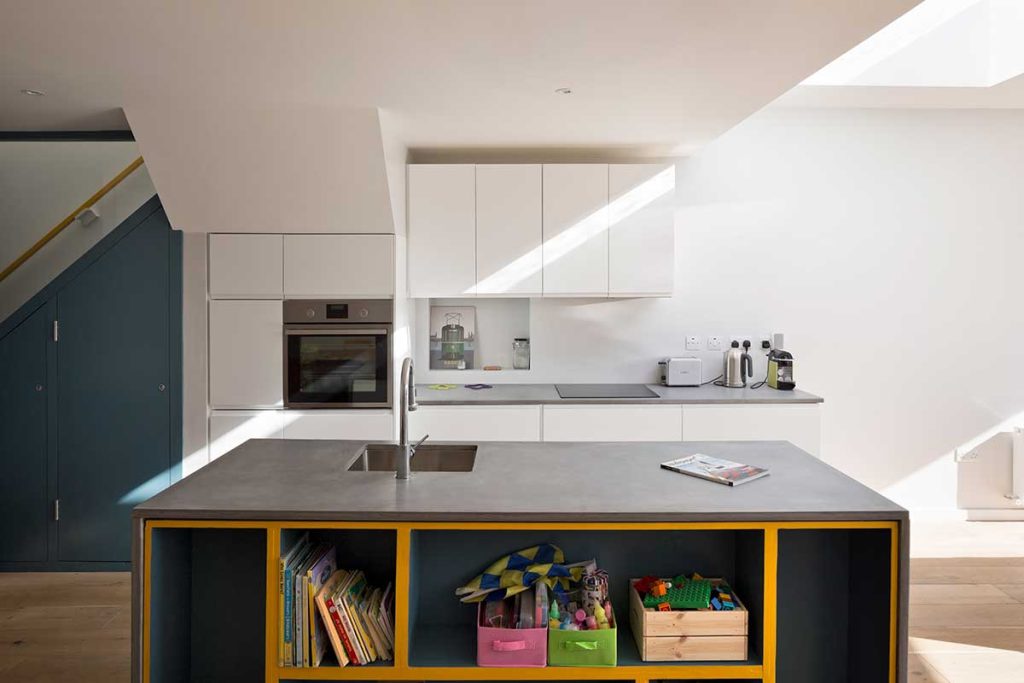
Consider the following tips:
1. Prioritise Core Elements
- Focus on getting the foundational elements of your kitchen extension right first, including layout, cabinets, and surfaces.
- Allocate the majority of your budget to these critical components.
2. Delay Accessory Purchases
- Avoid rushing into the purchase of furniture, lighting, and other accessories.
- Wait for items that genuinely resonate with your design vision.
3. Smart Shopping
- Take advantage of online shopping, second-hand marketplaces, and seasonal sales to make the most of your budget.
Designing your dream kitchen extension is a rewarding endeavour that requires thoughtful planning. Your extended kitchen should seamlessly blend function and style, catering to your unique lifestyle and aesthetic preferences. Prioritise durability in material selection, adhere to a well-defined budget, and remember that the key to a successful kitchen extension is the harmonious coexistence of practicality and elegance. With patience and careful consideration




